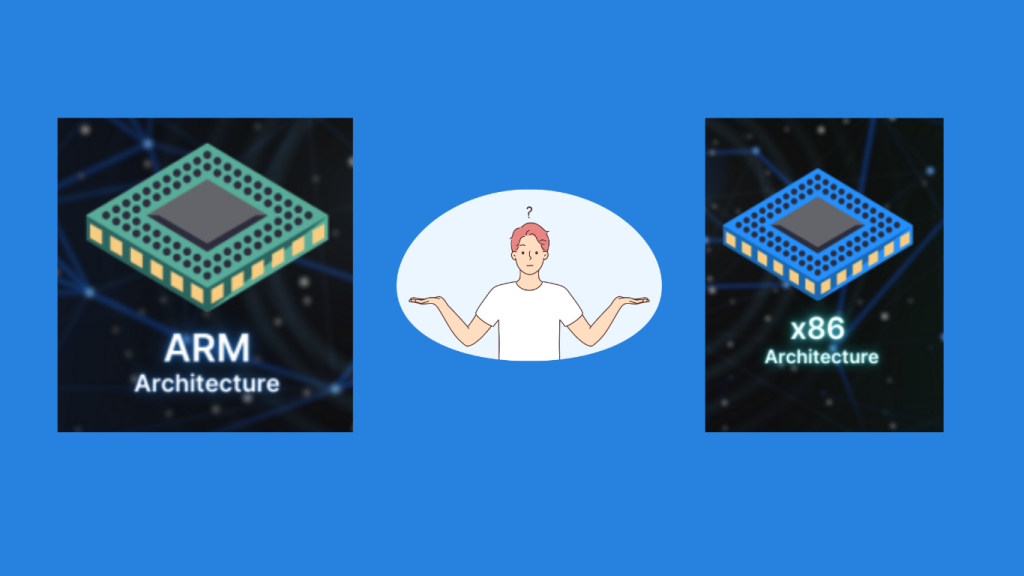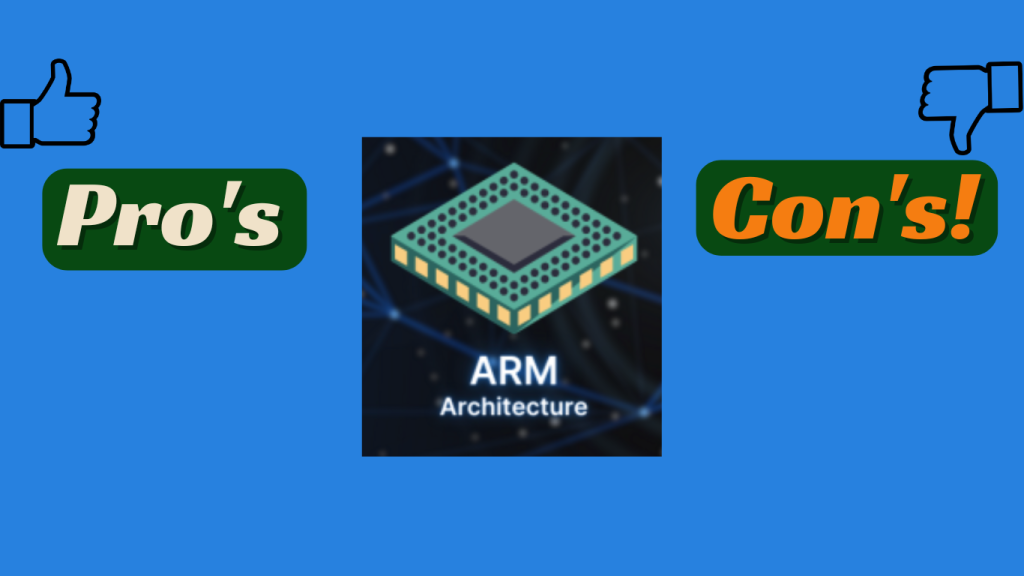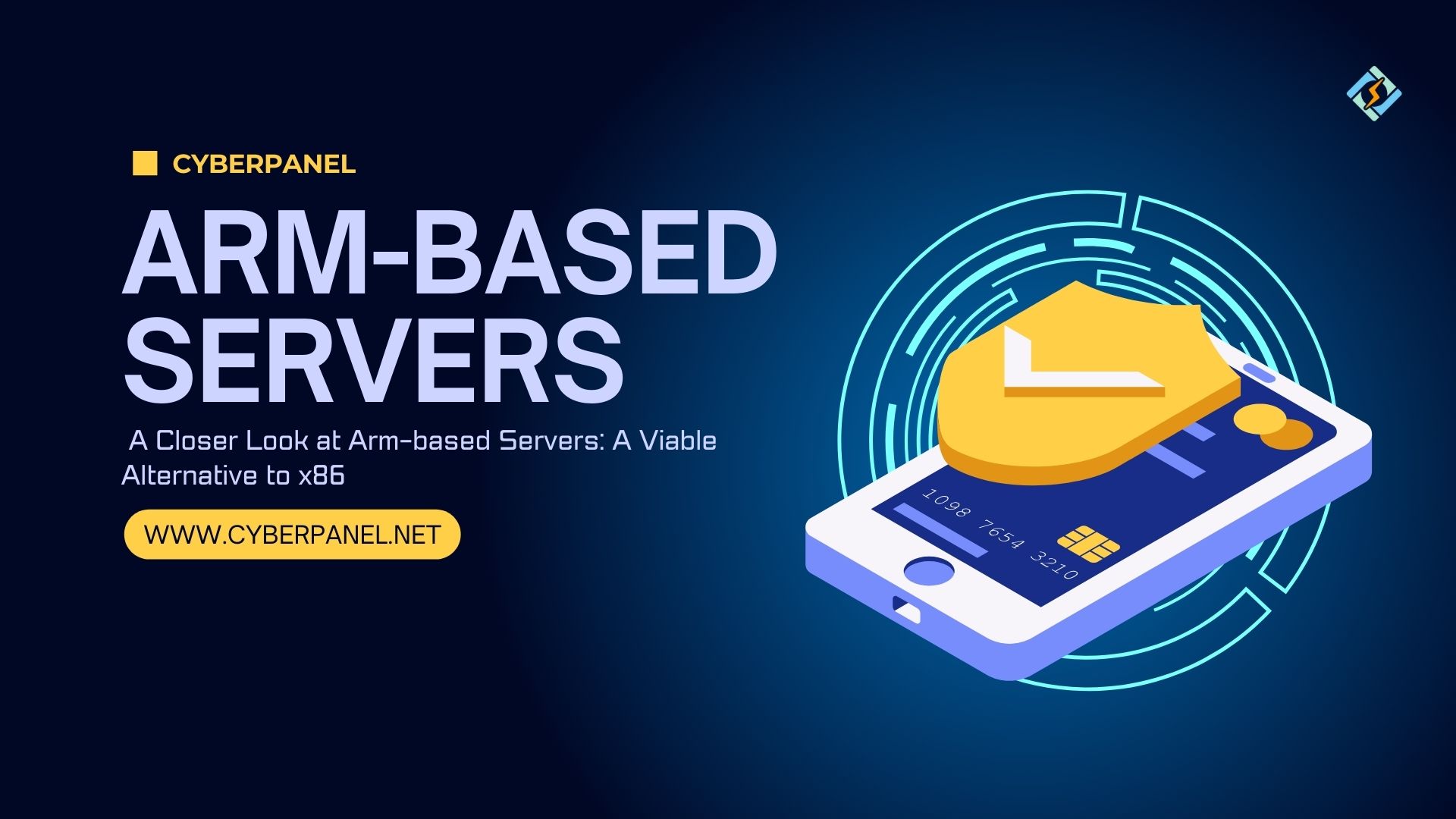Boring. Many people use that word to characterize the server industry, although “unexciting and boring” would be a more accurate description. Then why is it gaining so much attention and importance? How is the Arm-based server revolutionizing cloud services?
In this article, we will look more closely at the architecture of an Arm-based server, the advantages and disadvantages of this cutting-edge technology, and its potential applications in the cloud server space.
What are Arm-based Servers?
ARM stands for Reduced Instruction Set Architecture, or RISC, and is the foundation for the processor family that includes the Arm processor. ARM Limited is the company that develops it. They design the core CPU components and grant licenses for Intellectual Property (IP) to partner firms, who then alter the chips to suit their requirements. ARM neither fully produces nor markets any chips.
This server leverages ARM processors or chips rather than traditional x86 class CPUs as a result, the server architecture may generate targeted outcomes with reduced energy consumption. Arm-based servers provide a great advantage over the old x86 obviously as the digital times have drastically changed, things are not the same in the IT or digital world.
Key Milestones in Arm-based Server Development (Historic Overview)
A few years ago, there weren’t many options for the architecture of your PC. You either had the x86 from Intel or the x64 architecture from AMD. Even though x86 architecture is more than two decades old, the vast majority of computers still utilize it.
In the past, if you wanted the best CPU performance available, you had to purchase a high-end x86 chip. Alternatively, if you could afford it, you could get a PowerPC system or something more exotic. It appeared as though the industry’s reliance on x86 processors was growing rather than decreasing. x86 is an older architectural approach, with the first x86 CPU design launching in 1978.
Get exclusive access to all things tech-savvy, and be the first to receive
the latest updates directly in your inbox.
Since Apple became a member of the x86 club more than a decade ago, many observers have concluded that the mass market’s period of non-x86 CPUs has ended. A few years later, they were forced to withdraw their statements, and Apple was involved once more.
The upcoming Arm-based servers have the potential to revive the server market.
Comparing Arm-based servers & Traditional x86 Alternative

A classic example of a “complex instruction set computer” (CISC) design is the x86 architecture. On the other hand, ARM’s “R” stood for “reduced instruction set computer,” or RISC. That is where the main distinction between x86 and ARM CPUs is found. Here’s a list of differences for you to look at and get a clearer perspective.
ARM Architecture:
- An integrated method wherein the physical platform of the integrated circuit includes CPU cores.
- The same physical platform houses hardware tasks such as peripheral component connectivity and I/O bus controllers.
- An internal bus, sometimes referred to as a system on a chip (SoC), integrates many functionalities.
- The two main factors influencing the choice of ARM processors are adaptability and integration.
- The arm-based server is made to be lightweight and generate less heat.
- The designs are modified by manufacturers to fit their particular gadgets.
- Represents an alternative system design with unique connection and performance priorities.
x86 Architecture:
- Complex Instruction Set Computing (CISC) architecture.
- A modular design featuring a motherboard and replaceable parts.
- CPU plus additional parts that are tailored for particular tasks, such as graphics cards, GPUs, memory controllers, storage, and processor cores.
- Simple to expand or change out components.
- More uniform system designs that are open to exploits such as “write once, run anywhere”.
- There are at least 981 instructions in x86-64, while the precise number depends on your count.
Arm-based Servers: Advantages and Disadvantages

Let’s further explore what are the benefits and disadvantages we may face when using an Arm-based server.
ADVANTAGES:
1. ENERGY EFFICIENT: ARM devices are substantially more energy-efficient by design. They have a simpler design because they are RISC processors. Arm-based servers are perfect for cloud situations where energy conservation is essential, as energy efficiency is becoming a fundamental component of modern computing.
2. MONEY: Decreased manufacturing and deployment costs in general. Tailored and optimized solutions are possible with the licensing concept. Should a CPU have a high corresponding cost, you may be in for a high utility bill.
3. EDGE COMPUTING & IoT INTEGRATION: An Arm-based server is a great option for edge computing, Internet of Things devices, and data centers, thanks to its small size and low power usage. This technology enables better coordination and integration between remote edge nodes and central cloud infrastructure.
4. HARDWARE CUSTOMIZATION: Cloud service providers can create custom chips suited to their unique workloads and performance needs thanks to ARM’s flexible licensing approach, which improves resource efficiency and optimization of the cloud environment.
5. SUPPORT FOR HETEROGENEOUS COMPUTING: Energy-efficient cloud platforms tailored for a range of cloud workloads, including AI/ML, big data analytics, and high-performance computing, can be created by combining arm-based servers with hardware accelerators like GPUs and NPUs.
DISADVANTAGES:
1. VENDOR LOCK-IN: Although ARM provides an open ecosystem, certain cloud service providers may create specialized arm-based servers that make it more difficult to move workloads back to on-premises servers or alternative cloud providers.

2. COSTS ASSOCIATED WITH THE TRANSITION: Restructuring code, testing, and staff training may be necessary when moving current applications and workloads from x86-based platforms to Arm-based server and cloud infrastructure. These activities will contribute to the overall cost and duration of the migration.
3. IMMATURE ECOSYSTEM FOR CERTAIN WORKLOADS: Despite the ARM ecosystem’s rapid growth, organizations wishing to use ARM-based cloud services for these applications may encounter difficulties because they may not yet have mature tools and libraries for certain complex or niche workloads that are currently optimized for x86-based platforms.
Arm-Based Servers Available in the Market
There are several Arm-based servers on the market right now, each serving a particular purpose and application.
1. Amazon Graviton Processors: A famous instance of an ARM-based server is the Graviton processor from Amazon. The purpose of these processors is to provide improved performance and reduced costs for AWS services. Compared to its predecessors and comparable x86 processors, the Graviton3, in particular, offers notable advances in terms of both performance and energy efficiency (Shacknews; Enterprise Technology News and Analysis).
2. Google Axion Chips: To improve performance and affordability in cloud computing, Google and ARM worked together to develop the Axion chips. According to Shacknews, these chips will be made available to third-party clients later in 2024 and are anticipated to be utilized in some Google services.
3. Ampere Altra Processor: Known for their single socket architecture, high core density, and energy efficiency, Ampere Altra and Altra Max are high-performance Arm-based server processors. These processors provide strong performance for big data, AI, and machine learning applications and are ideal for cloud-native workloads.
Because of their benefits in energy efficiency, scalability, and flexibility, these ARM-based solutions are becoming in cloud computing environments, making them formidable rivals to conventional x86-based servers.
Optimizing Performance with an Arm-based Server
We’ve simplified the key points that help you optimize and upscale your performance using Arm-based servers. The following strategies will help you understand the unique features of arm-based servers better so you can easily make use of them when required.
1. Use Parallel Processing
Parallel processing is a strength of ARM processors. Make sure your program can split up work among several cores to maximize efficiency.
2. Combine with Accelerators in Hardware
To improve AI and machine learning performance, use ARM processors equipped with GPUs, NPUs, or FPGAs.
3. Enhance Software
Your code should be recompiled and optimized for the ARM architecture. For signal processing and multimedia, make use of ARM’s NEON technology.
4. Effective Handling of Memory
To decrease the memory footprint and increase cache utilization, use memory-efficient methods.
5. Energy-saving and air-conditioning
CPUs made by ARM use less power. Avoid overheating preserve steady performance, and optimize your power and cooling systems.
6. Utilize Tools Designed for ARM
For improved profiling and debugging, use ARM-optimized tools and libraries such as ARM Forge, Performance Libraries, and ARM Compiler.
7. Using Microservices and Containerization
Use tools like Docker and Kubernetes to deploy microservices so that you may grow components independently and maximize resource utilization.
8. Frequent Observation
Keep an eye on performance to spot blockages and address them. Adjust system settings to get the best possible performance.
Troubleshooting Common Issues with Arm-Based Servers
Nothing that you use comes without problems, especially with something like arm-based servers one will create and implement a service with a faulty basis.
Issues with Booting:
- Make sure that the power supply is sufficient and operating.
- Check the bootloader settings.
- Verify any faults on the SD card or storage device.
Problems with Network Connectivity:
- Verify the DNS, IP address, gateway, and netmask configurations.
- Examine the ports and wires on your network.
- Verify the firewall settings to make sure necessary traffic isn’t being prevented.
Degradation of Performance:
- Use programs like htop or top to keep an eye on CPU and memory use.
- Turn off any unused services and daemons.
- To avoid overheating, make sure there is adequate ventilation and cooling.
Arm-based Server Future Prospects
You’ll be surprised to know that Microsoft is banking on Arm-based servers and technology to be the “next big thing” and even extending its full support to developers across the entire world to help them create devices and applications for ARM. That pretty much proves the impact it already has in the digital world, let’s explore more prospects and predictions.
Market Trends and Predictions: During the projected period, an increase in the market share of Arm-based servers is expected. Furthermore, it is anticipated that demand for these servers may rise given the large number of companies that have made investments in Arm-based servers in response to the start of the digital revolution. In 2022, the North American market held a 34.2% market share of the global market. (futuremarketingsights)
Factors Anticipated To Accelerate The Market Growth For Arm-based Servers:
- Diminished energy
- processors for mobile apps
- Sensor-based embedded intelligence using ARM
- Superior output
- Robust server chip integration
Economic Considerations: The cost-effectiveness of ARM servers in comparison to x86 CPUs will be a major factor in their adoption. Arm-based servers must provide substantial cost and performance advantages to become popular.
Applications for Niche Markets: It is anticipated that Arm-based servers will do better in specific industries than in broad web hosting. Perfect for jobs that need a lot of modest CPU cores, like data logging, simple query processing, managing certain databases, and different storage services.
Emerging Technologies ( AI, IoT, Cloud, etc): Because of their energy efficiency, affordability, and versatility, Arm-based servers are being used in AI, IoT, cloud computing, and big data applications. These servers, which offer excellent performance and financial benefits that spur innovation and operational efficiency, are perfect for training sophisticated models, edge computing, cloud computing, and big data analytics.
FAQ’s
What are Arm-based servers?
Servers that utilize ARM (Advanced RISC Machine) architecture compared to the conventional x86 architecture are called Arm-based servers. Smartphones, tablets, and embedded systems all use ARM processors, which are renowned for being energy-efficient and can offer lower power consumption and possibly cheaper operating costs. These servers are quite popular in data centers and cloud computing settings.
How do ARM-based servers compare to x86 servers in terms of performance?
ARM and x86 servers have different strengths.
Arm-based servers are becoming more competitive in certain use cases, especially where scalability and energy efficiency are key. However, x86 servers continue to be known for their strong performance and mature ecosystem in many enterprise applications. The choice between ARM and x86 depends on specific workloads and requirements, with ARM sometimes offering better cost-effectiveness and efficiency, and x86 excelling in other scenarios.
What are the advantages and disadvantages of Arm-based servers?
These servers come with both pro’s and con’s take a look at the following:
Benefits:
Energy Efficiency: Because Arm-based servers use less electricity, they require less cooling and require fewer operating expenses.
Cost-effective: A lower total cost of ownership is the result of less energy being used and occasionally less expensive technology.
Scalability: ARM architecture efficiently enables cloud settings and large-scale deployments.
Drawbacks:
Restricted Ecosystem: Software compatibility may be affected by the less developed ecosystem of ARM servers in comparison to x86 servers.
Performance Variability: ARM may not currently match x86 in all enterprise applications, and performance may vary based on certain workloads.
Endnote
In this article, we have provided you with a detailed look at Arm-based servers, their historic overview, prospects and predictions, and how to build your server.
They are a good choice because of their benefits, which include cost reductions, scalability, and energy efficiency. They do, however, face difficulties including a less developed environment and inconsistent performance. Depending on particular demands and constraints, x86 servers may face more competition from Arm servers as ARM technology advances.
Consider the platform you intend to use when making your decision, but ultimately, it comes down to your PC priorities. Windows performs most effectively on x86 computers for PC users. While Windows does have support for ARM, more development is required before it can be effectively used by all users.



